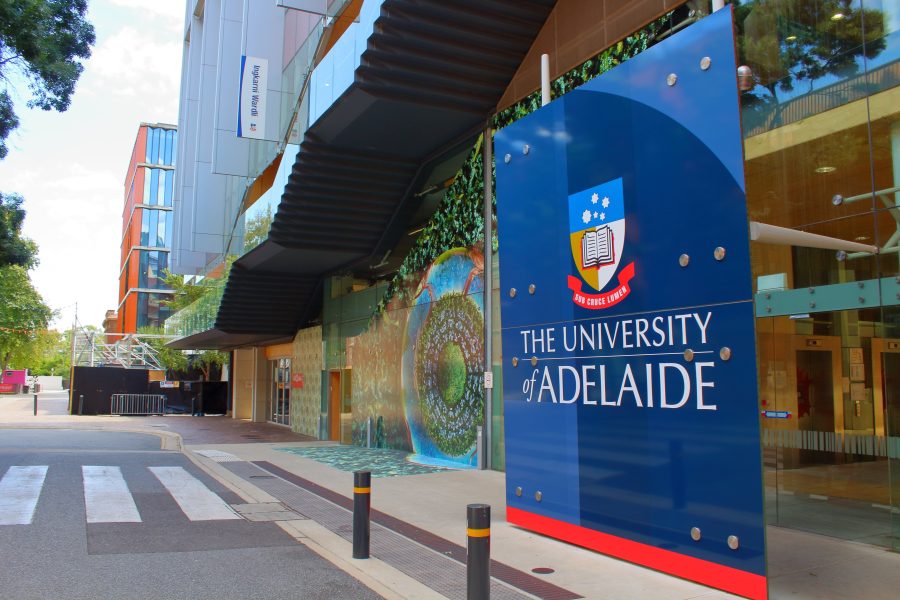The last few months have seen a flurry of negative news stories from across the major English-speaking study destinations.
On 11th January, the University of York – a high-ranked Russell Group institution in the UK – was reported by the Financial Times to have lowered its entry requirements for international students for some programmes, including computer science and medicine. Denied by the university as being a policy decision, it was presented instead as a flexible admissions approach for students who just miss their grade.

University of York
For many in the sector, this is the tip of a very large iceberg. One which UK higher education is struggling to navigate around. As the FT put it: ‘The move by University of York follows warnings from cash-strapped higher education leaders about a downturn in the number of more lucrative international students coming to the study in the UK.’
The winter of our discontent
Coventry University and Sheffield Hallam University headline the mid-ranked UK universities reported to be in trouble. Both institutions are under threat of breaching their banking covenants, according to Times Higher Education. In December, Coventry University announced it would make £100m of cuts over the next two years. At Sheffield Hallam University, 1,700 academic staff were invited to apply for a voluntary severance scheme.

Tough times in the steel city
Government immigration policy, restricting visas for dependants of international students, and raising the minimum salary level at which skilled workers can obtain a visa, have impacted on the attractiveness of the UK as an international study destination. This is a significant root cause of the hit on the finances of many universities. Funding for teaching domestic students has fallen significantly in England, with undergraduate annual tuition fees capped at £9,250 since 2017, in an environment of rising inflation rates. Higher international student fees, which are not controlled, have underpinned the finances of many universities. Coventry University has previously been very successful in its international activities. In the academic year 2021/22, the last period for which data is currently published by the Higher Education Statistics Agency, Coventry enrolled 15,565 non-UK students, the 6th highest total.
Student immigration under pressure
Institutions in Australia, Canada, and the United States are facing international education market challenges of their own.
As highlighted by Alan Preece in his View from a Bridge blog, Canada’s growth in international student numbers has been stellar, with a doubling of study permit holders to over 800,000 from 2016 to 2022. Concerns about the quality of applications, unregulated agents, diversity, the capacity of the sector to deliver good quality accommodation and services to international students, and weakening graduate outcomes, tarnish the success story.
Nick Cuthbert writes in the PIE News: ‘Immigration minister Marc Miller has gone as far as comparing the education system in Canada to a “puppy mill” with the student visa department being overloaded with poor quality applications.’

The other York University – in Toronto. No sign of any puppies.
The number of study permit approvals is already being given greater scrutiny by the national Immigration Department. The Immigration, Refugees and Citizenship Canada (IRCC) will introduce a new Trusted Institution framework this year, aimed at further addressing the significant service and quality problems at some of the country’s institutions.
Recruitment from India is already impacted heavily, with study permits declining by over 40% since July 2022, according to MSM Reporter, following rising student dissatisfaction and geopolitical tensions between Quebec and New Delhi.
The Australian government is also attempting to tighten up on student and graduate visas, within a new Migration Strategy. A new Genuine Student Test is being introduced, to mitigate the rising numbers of students perceived to be seeking work rather than study. The strategy document also commits to better regulation of education agents to tackle the problem of visa misuse.
International student numbers in Australia have been booming, with a 31% increase over the prior year to 746,080 for the January-September 2023 period.
It is election year in the United States. The return of Donald Trump as president is quoted at 5/4 by Betfair Sportsbook, a UK bookmaker, denoting a 44.44% probability of success. The United States is remains very strongly positioned in the world of international education, particularly in STEM disciplines. But last time he was president, Trump’s anti-immigration rhetoric had a statistically significant impact on driving a proportion of international students to competing destinations.
As Preece points out, a rise international proactivity amongst United States institutions, combined with positive government support, has put the sector in a very strong position. Higher education institutions in the United States will be watching the presidential election results from behind their couches.
Against this backdrop, 2024 is likely to be a year of challenges for international student recruiters in the United Kingdom, Canada, Australia, and the United States. Granted, there may not be too many positives for institutions in the United States if Trump is victorious. Nor will universities in the United Kingdom be dancing in the streets if the ruling Conservative Party clings to power for another year before a general election is held, given its confusing and kneejerk shaping of immigration policy and its internal (and infernal) civil war.
All businesses, including higher education providers, prefer certainty. Being beholden to the whims of politicians, in place of long-term vision and strategy, is frustrating for all actors in international education. Despite this, there are substantial positive outcomes that may well emerge from the current gloom in the medium term. Even if it does not feel like that at the moment.
Reasons to be cheerful
In the absence of increased government support or subsidies, consolidation and collaboration, and a drive for quality will become mission critical objectives for internationally-oriented higher education institutions in the four main English-language speaking destinations. The goals of this should be:
- Improved services to international students, and prospective international students
- Engagement with and support for the career progress of international graduates
- Ability to sustain higher international fees (or lower discount rates from existing fees) due to the increased value of the proposition to students at all stages of the student journey
1. Consolidation and collaboration
This is not necessarily simply to suggest full mergers of public higher education institutions, although that could be a desirable outcome in some cases, in order to save back office costs and relieve financial pressures (see also footnote*).
Indeed, a mega merger – the largest in Australia higher education history – between University of South Australia and University of Adelaide has recently received government approval in Australia, leading to the creation of Adelaide University. Driven by the pursuit of financial stability, and public funding considerations, the merger ‘will advance South Australia as a premier destination for international students, with $30 million to be invested in the recruitment of international students and an extra 6,000 international students projected by 2034’, as reported on the Insider Guides website.

One half of a new mega university
An article from McKinsey & Company, a consultancy, last summer outlined the options for alliances for US higher education institutions (HEIs) , as an alternative to full mergers or acquisitions. (The frequency of mergers and acquisitions was also found to be accelerating). The motivation for greater collaboration, or formal integration, is declining domestic enrolments, an imminent demographic drop in high school leavers, and an inflationary cost base.
Instead of a full merger, universities and colleges should look at opportunities to:
- Share back office operations and administrative services with one or more other HEIs, including international recruitment, admissions and enrolment services. This would work best between HEIs in the same city, or between institutions with a similar profile of target markets and audiences.
- Formally collaborate on overseas promotion. Solutions could range from pooling resources and effort for overseas recruitment travel and in-market activities, to joint ventures for the services provided by overseas recruitment offices and teams.
- Alliances or joint ventures focused on transnational education opportunities, such as overseas campuses or strategic partnerships with universities in different countries of shared interest
2. Drive for quality in individual or allied institutions
Higher Education institutions like to talk about quality. But when it comes to the execution of an approach and processes to deliver international recruitment, student experience, and graduate outcomes, many are sadly lacking. To address this, HEIs should:
- Rationalise the number of education agents that each institution works with. This should improve both the quality and efficiency of recruitment. At the moment, some HEIs have agent lists running to hundreds of different agency partners. As well as being hugely inefficient, and increasing acquisition costs, dealing with numerous recruitment partners – through a fragmented agent network – is risky from a compliance perspective. One of the lessons from the rapid expansion of international students numbers in recent years is that some agents provide weak processes for attracting, engaging with, and receiving applications from their students. Relationships with education agents should be managed much more effectively by education providers than they commonly are.
- Deploy tech-enabled enrolment processes, whether delivered via shared services between institutions or on an individual institution basis, can improve services to prospective students . Too many universities still rely heavily on manual admissions decisions, some of which can take weeks to make, prompting international students to seek alternative options. Developments in artificial intelligence are likely to revolutionise customer service and operational efficiency.
- Pursue best practices in delivering a great international student experience is an imperative for HEIs. Not least, the preparation of students for finding job and career opportunities beyond graduation is a critical driver for how international students value their overseas university experience. Bringing a focus to this aspect of the journey, and rigorously tracking international graduate outcomes so that they can be evidenced, enhances the reputation not just of the institution but of the sector overall. It also enables inputs to be improved, amplifying value for future students.
Conclusion
Simply pushing up fees, or reducing discounts (bursaries and scholarships) for international students, is not always feasible as a way to improve revenue on lower enrolment volumes. Whilst some institutions have an opportunity to manage pricing much better than they do today, many of them do not have the market power to increase prices. Nor will that be possible without tangible improvements to the value they offer to their customers.
However, HEIs can focus on both efficiency and cost savings in the acquisition of international students, and use some of the upside gained to invest in services and student experience. This will create ongoing benefits for all parties. Institutions that are successful should be able to win volume market share, with a higher quality of revenue. International students will receive a much better return on their considerable investments. Governments will see that the industry is trying hard to get its house in order on issues of quality and compliance. They may even decide to offer their universities greater support.
*Footnote
Matt Robb, Partner at Deloitte, wrote on his personal X account that, aside for a group of UK higher education institutions that do not have a ‘viable catchment & will never be financially strong enough to underpin high quality provision for a wide range of subjects…’ [Robb recommends that these ones should return to being colleges ‘much lower cost structure, or become someone else’s branch campus (but viability issues) or simply close.’].
‘Much of the remainder needs to consolidate. Rule of thumb: half the back office costs of the smaller institution can be saved. More if digital and tech properly applied but this is typically £10s of millions and won’t happen in a merger timescale. Apply that rule to 2x £300M HEIs and the cost savings available through a merger are ~£75M. Discount by half for execution risk and you’re talking £25-£50M saving / surplus. There is no other solution for HEIs that looks like this.’